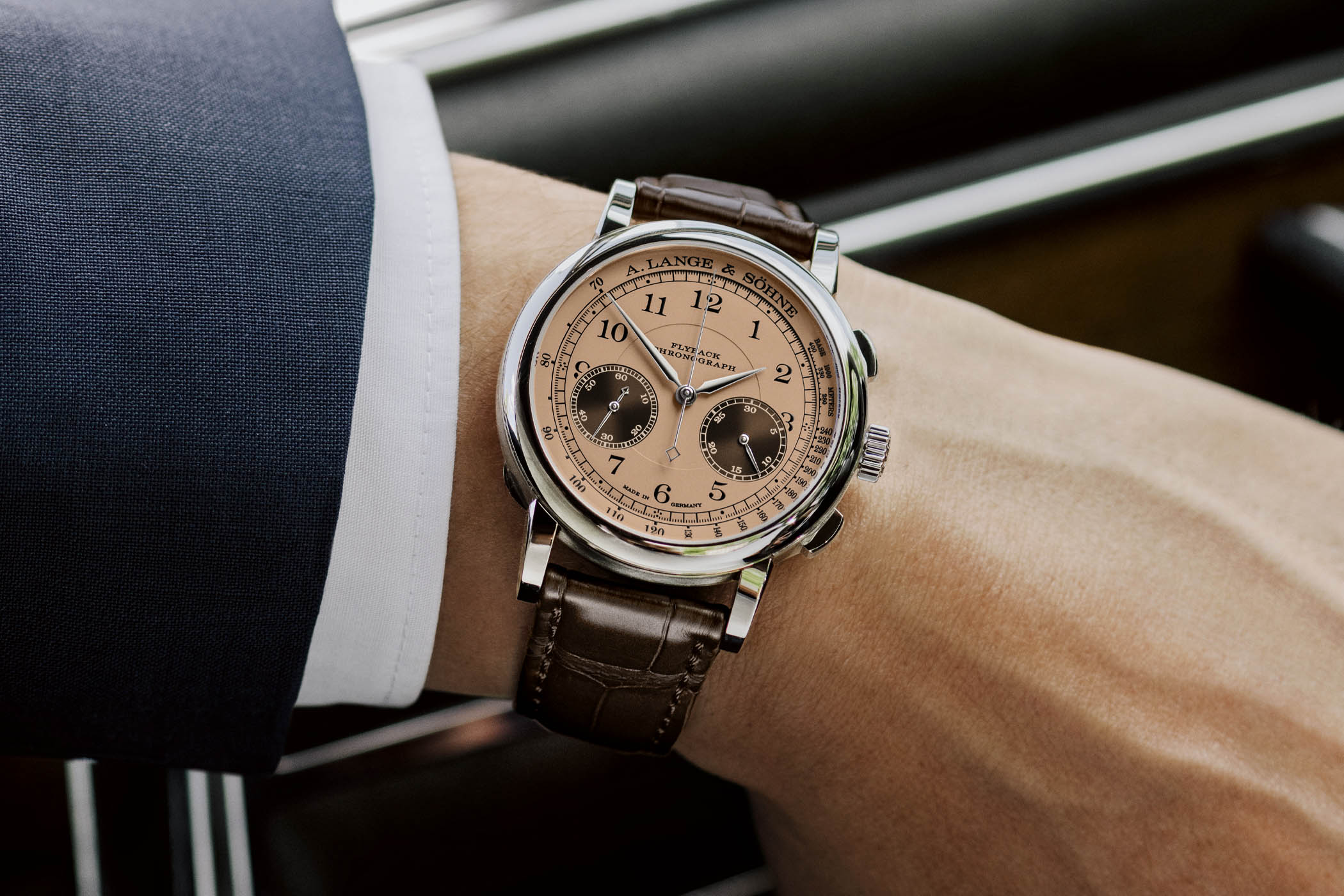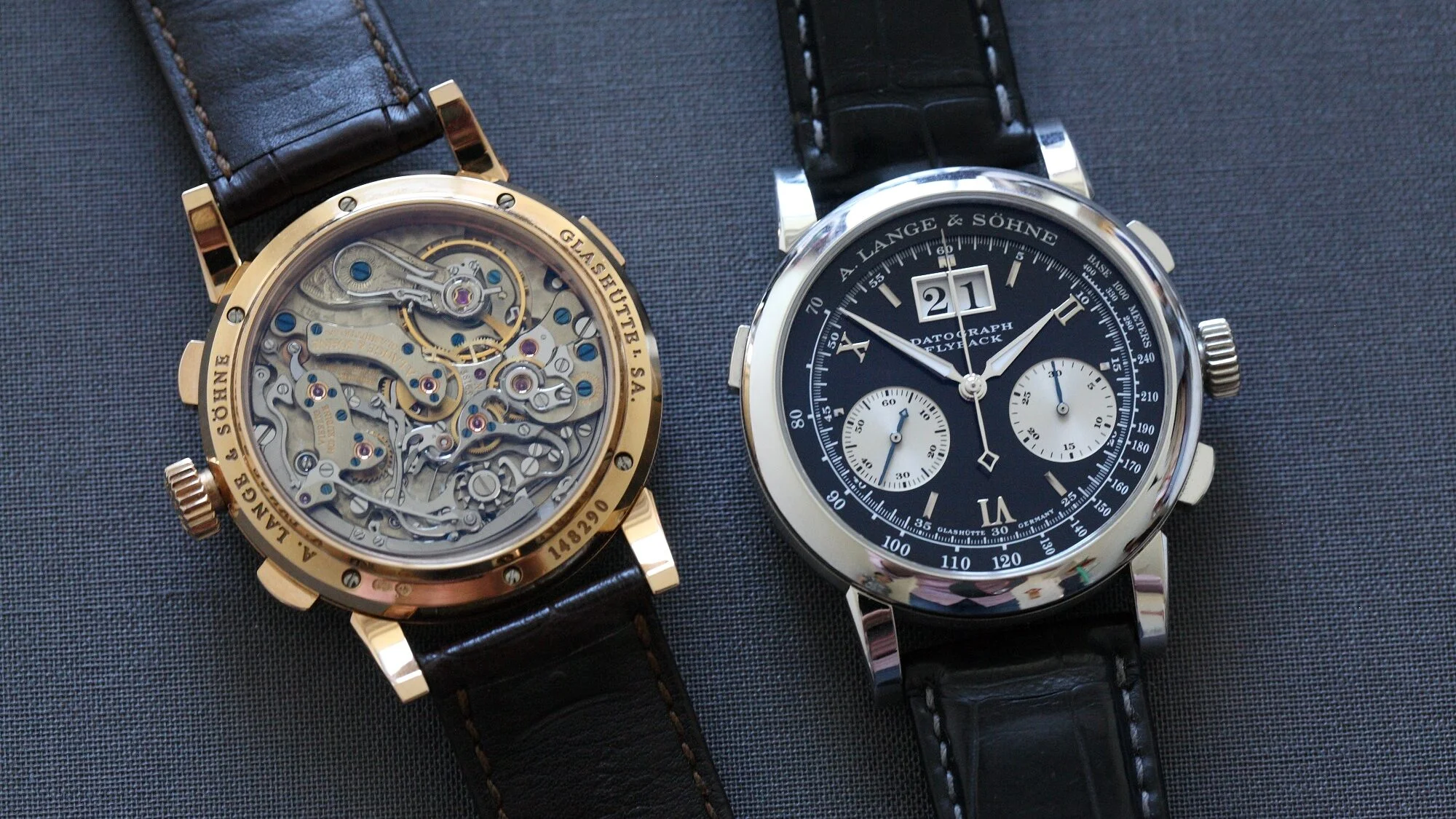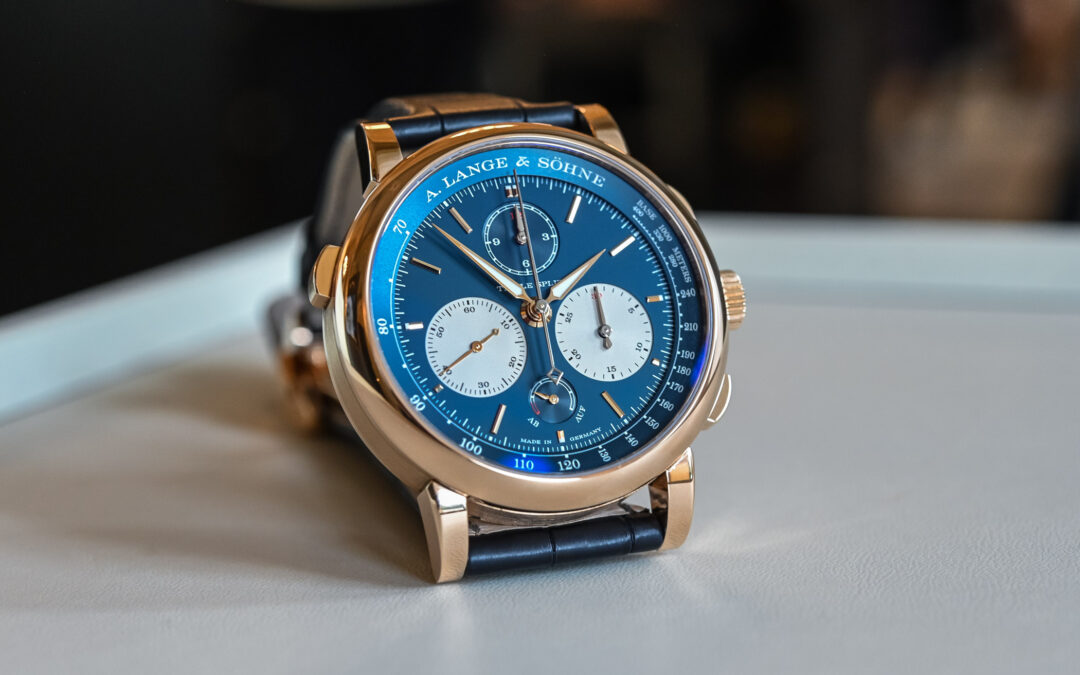A. Lange & Söhne, a name synonymous with precision, luxury, and unparalleled craftsmanship, has a storied history that mirrors the tumultuous yet triumphant spirit of its homeland, Saxony, Germany.
Founded in 1845 by Ferdinand Adolph Lange in the small town of Glashütte, the brand quickly established itself as a pioneer in watchmaking, setting benchmarks for quality and innovation.
We delve into the rich tapestry of A. Lange & Söhne’s history, exploring its founding principles, the challenges it faced through wars and political upheaval, its remarkable revival in the 20th century, and its enduring legacy as a titan of the luxury watch industry.
The Founding Era (1845-1948)
The journey of A. Lange & Söhne began in 1845 when Ferdinand Adolph Lange, a master watchmaker, decided to establish his own watchmaking company in the small town of Glashütte, Saxony.
With a visionary approach and a loan from the Saxon government, Lange sought to transform Glashütte, then a struggling mining town, into a center of horological excellence.
This bold move not only aimed to create high-quality timepieces but also to uplift the local community by providing training and employment.

Lange’s commitment to precision led to the introduction of the metric system into watchmaking, a significant departure from the traditional Parisian system.
This innovation facilitated the standardization of watch parts, enhancing their interchangeability and the overall quality of the watches.
Under Lange’s guidance, the company introduced several groundbreaking innovations, such as the three-quarter plate, which increased the stability of the movement, and a unique lever escapement, improving accuracy.
The company flourished under the leadership of Ferdinand Adolph Lange and, later, his sons, Richard and Emil Lange.
They continued their father’s legacy of innovation by developing the first chronograph and introducing the “Lange 1” timepiece, which featured an off-center dial and a large date display, becoming a signature of the brand.
The advent of World War II and the subsequent occupation of Germany had profound effects on A. Lange & Söhne. The company contributed to the war effort by manufacturing timepieces for the German military, which, while keeping the business operational, also led to significant challenges post-war.
The end of the war and the division of Germany placed Glashütte in the Soviet-occupied zone, leading to the nationalization of the company in 1948 and marking the end of the founding era of A. Lange & Söhne.
This period was characterized by a blend of pioneering innovation, expansion, and the unforeseen challenges brought about by geopolitical upheavals.
Despite these challenges, the foundational principles and the legacy of craftsmanship established by Ferdinand Adolph Lange laid the groundwork for the brand’s enduring success.
Nationalization and the Division of Germany (1948-1990)
The post-war division of Germany significantly impacted A. Lange & Söhne, culminating in the nationalization of the company in 1948. This period marked a dramatic shift in the company’s operations, as the East German government took control of the watchmaking industry in Glashütte. A. Lange & Söhne, known for its luxury timepieces and innovative craftsmanship, found itself absorbed into the state-owned VEB Glashütter Uhrenbetriebe (GUB).
This transition was emblematic of the broader nationalization policies affecting East Germany’s industries, fundamentally altering the legacy and operations of the esteemed watchmaker.
Despite the challenges of nationalization, the watchmakers and craftsmen of Glashütte remained committed to the principles of precision and quality that had defined A. Lange & Söhne.
Under the auspices of GUB, they continued to produce high-quality timepieces, albeit with a focus that shifted more towards practicality and affordability, in line with the socialist government’s priorities.

The period saw the production of reliable and functional watches, which, while different in prestige and design from the pre-war luxury models, maintained a level of craftsmanship that echoed the company’s storied past.
During these years, the Lange name lived on more in spirit than in brand, as the original company no longer existed as an independent entity. However, the legacy of Ferdinand Adolph Lange and his descendants was preserved through the dedication of Glashütte’s watchmakers, who continued to apply the techniques and standards of excellence that had been the hallmark of A. Lange & Söhne.
This period also saw the emergence of a new generation of watchmakers in Glashütte, trained in the shadow of Lange’s legacy, laying the groundwork for the brand’s eventual revival.
Navigating Political Changes
The fall of the Berlin Wall in 1989 and the subsequent reunification of Germany in 1990 heralded a new era for the country and for the watchmaking industry in Glashütte. These political changes opened the door for the re-establishment of A. Lange & Söhne as a symbol of luxury watchmaking and a testament to the enduring spirit of innovation and excellence that had defined it since its inception.
The Revival (1990-Present)
The early 1990s marked the beginning of a new chapter for A. Lange & Söhne. In 1990, Walter Lange, the great-grandson of Ferdinand Adolph Lange, seized the historic opportunity to revive the family’s legacy.
Together with watch industry veteran Günter Blümlein, Walter Lange re-established the brand, reintroducing A. Lange & Söhne to the world of luxury watchmaking.
This bold move was a testament to the resilience and enduring legacy of the Lange family’s commitment to excellence.
The Launch of the New Lange 1
The launch of the new Lange 1 in 1994 was a defining moment for the revitalized brand. With its off-center dial, outsized date, and a meticulous level of craftsmanship, the Lange 1 was an instant classic, embodying the innovation, precision, and elegance that had been synonymous with A. Lange & Söhne.
This timepiece not only marked the successful revival of the brand but also set new standards in the luxury watchmaking industry.
Since its revival, A. Lange & Söhne has introduced a series of groundbreaking timepieces and innovations, reaffirming its position at the forefront of the watchmaking industry.
The brand has continued to push the boundaries of precision, craftsmanship, and design, introducing models such as the Zeitwerk with its mechanical digital display, and the Datograph, with its flyback chronograph and precisely jumping minute counter.

Today, A. Lange & Söhne stands as a pillar of the luxury watchmaking world, a symbol of enduring quality, innovation, and craftsmanship. The brand’s commitment to excellence, rooted in the vision of its founder and carried forward through generations, continues to inspire watch enthusiasts and collectors around the globe.
As A. Lange & Söhne looks to the future, it does so with a deep respect for its heritage and a relentless pursuit of horological perfection.
Signature Innovations and Collections
Since its revival, A. Lange & Söhne has cemented its reputation through a series of technical innovations and the introduction of iconic collections that have redefined the standards of luxury watchmaking. Each timepiece reflects the brand’s commitment to precision, innovation, and exquisite craftsmanship, traits that have been synonymous with the Lange name since 1845.
The Lange 1: A Symbol of Revival
The Lange 1, introduced in 1994, quickly became a hallmark of the brand’s resurgence and innovation. Its off-center dial, outsized date, and the use of a three-quarter plate movement underscored A. Lange & Söhne’s dedication to combining traditional Saxon watchmaking with a contemporary aesthetic.
The Lange 1’s distinct design and mechanical ingenuity set a new benchmark for luxury timepieces and became a cornerstone of the brand’s collection.
Zeitwerk: Mechanical Ingenuity
Launched in 2009, the Zeitwerk collection showcased A. Lange & Söhne’s innovative spirit with its mechanical digital time display. This revolutionary design, featuring jumping numerals that provide a clear and instant reading of the time, represented a bold step forward in mechanical watchmaking.
The Zeitwerk’s precise engineering and distinctive aesthetic underscore the brand’s ability to push the boundaries of traditional horology.
Datograph: The Benchmark for Chronographs
The Datograph, unveiled in 1999, set new standards for chronograph watches. Renowned for its flyback function, precise jumping minute counter, and the clarity of its dial layout, the Datograph exemplifies A. Lange & Söhne’s mastery of complex mechanical movements.
Its integrated column-wheel chronograph mechanism demonstrates the brand’s commitment to technical excellence and functional design.
The Double Split and Triple Split: Masterpieces of Precision
A. Lange & Söhne further solidified its reputation for technical brilliance with the introduction of the Double Split in 2004 and the Triple Split in 2018.
These timepieces feature split-seconds (rattrapante) chronograph functions that allow for the timing of simultaneous events of different durations—an unprecedented feat in mechanical watchmaking.
The Double Split and Triple Split exemplify the brand’s pioneering spirit and its pursuit of horological challenges.
A. Lange & Söhne continues to explore the frontiers of watchmaking, as evidenced by its recent innovations and the ongoing development of its collections. The brand’s dedication to marrying traditional craftsmanship with technological advancement ensures that each timepiece is not only a work of art but also a testament to the enduring legacy of its founders.
The Brand’s Legacy and Future
As A. Lange & Söhne strides into the future, it carries with it over 175 years of watchmaking heritage—a legacy of innovation, precision, and craftsmanship that has transcended generations.
The brand remains steadfast in its commitment to producing timepieces that are unparalleled in quality and design, embodying the spirit of its founder, Ferdinand Adolph Lange.
Looking ahead, A. Lange & Söhne is poised to continue its tradition of horological innovation, pushing the boundaries of what is possible in mechanical watchmaking.
With a focus on sustainability, technological advancement, and the preservation of the art of fine watchmaking, the brand is dedicated to ensuring its legacy for future generations.
Conclusion
A. Lange & Söhne’s journey from its founding in 1845 to its present-day status as a beacon of luxury watchmaking is a story of resilience, innovation, and an unwavering commitment to excellence.
As the brand looks to the future, it does so with the knowledge that its past achievements are only the foundation for the next chapter in its storied history—a future that promises to continue the legacy of Ferdinand Adolph Lange for generations to come.

